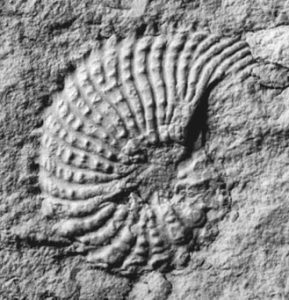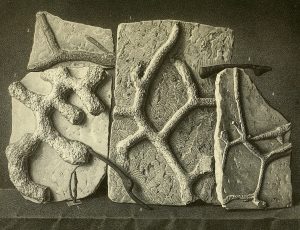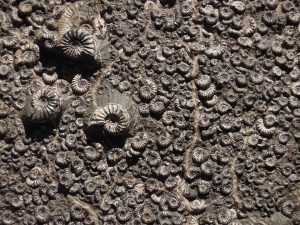Fossil
Fossils are the remnants or traces of either animals or plants. Here is an example of how a fossil forms: An animal dies and the flesh rotes away but the bones (body) gets buried under for example sand or mud, and with time as the layers are buried under more sediments, the sand/mud turns into sand- or mudstone. After some time the layers will start to erode again and eventually the fossil is exposed and the remnants can found.
This why we today can find fish remnants up in the Himalayas, they have at some point been buried deep in the bottom of the sea, but as geological time passes maybe millions of years and the continents collide the old sea bottom is pushed up when a mountain chain is formed.

Fossil: (Source:http://upload.wikimedia.org/wikipedia/commons/5/59/ Trachyceras_Brotheotrachyceras_brotheus.jpg)
Trace fossil (https://commons.wikimedia.org/wiki/File:Thalassanoides-trace-fossil-from-the-Saxonian-Cretaceous-basin.jpg)




 This project (EDU-ARCTIC) has received funding from the European Union’s Horizon 2020 research and innovation programme under grant agreement No 710240. The content of the website is the sole responsibility of the Consortium and it does not represent the opinion of the European Commission, and the Commission is not responsible for any use that might be made of information contained.
This project (EDU-ARCTIC) has received funding from the European Union’s Horizon 2020 research and innovation programme under grant agreement No 710240. The content of the website is the sole responsibility of the Consortium and it does not represent the opinion of the European Commission, and the Commission is not responsible for any use that might be made of information contained.